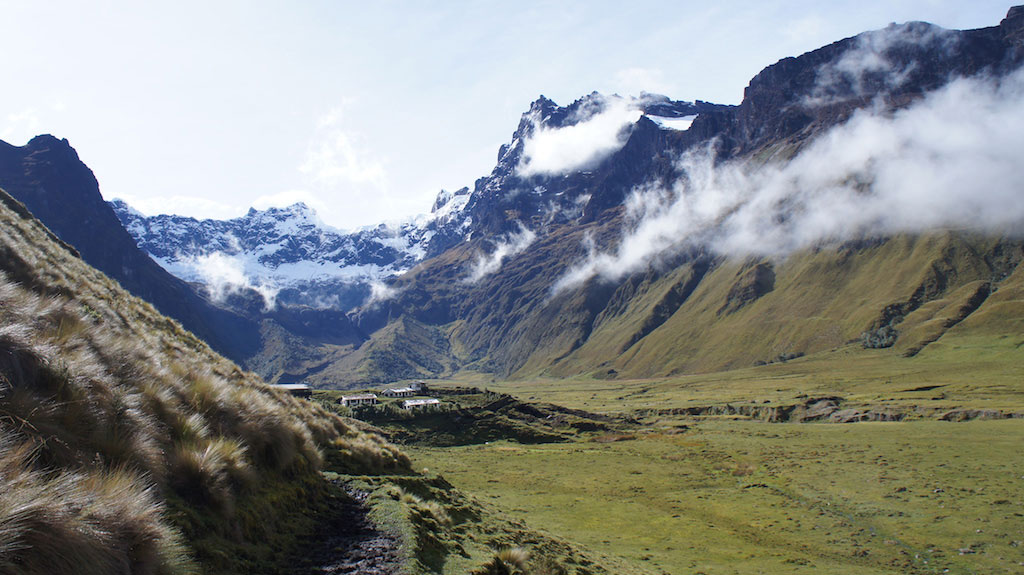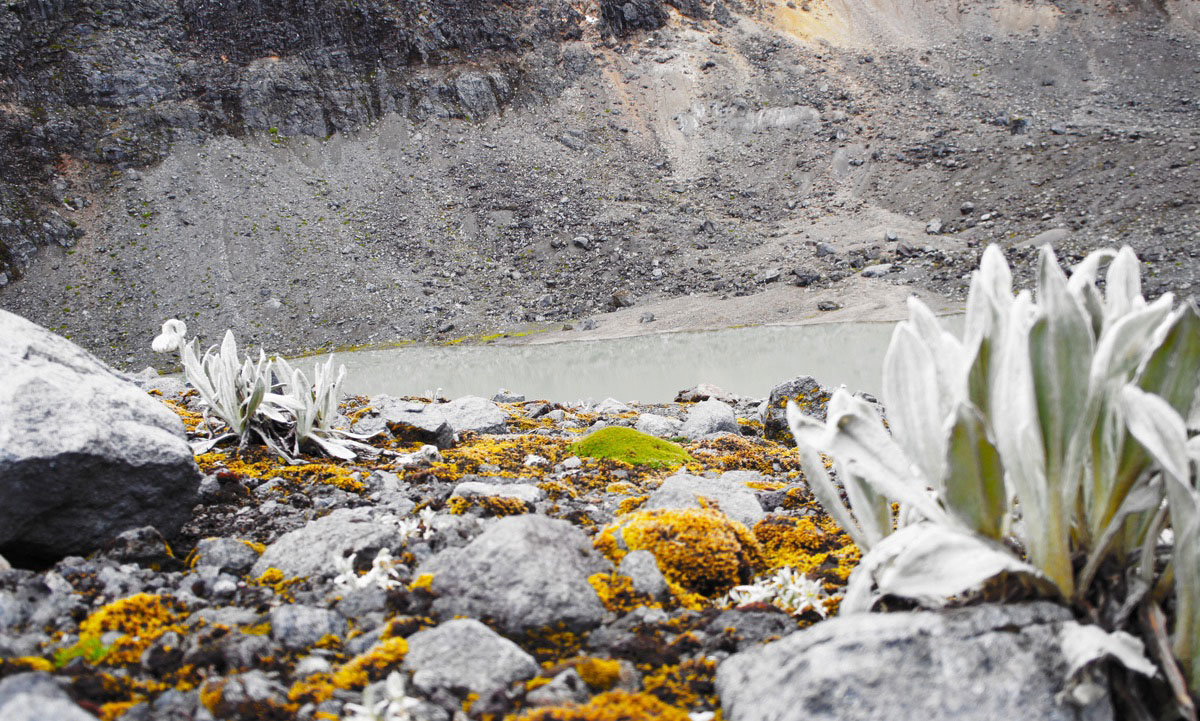Andes Nature
National Parks and Protected Reserves
The Andes Cordillera is made up of volcanoes, of which most are dead or dormant. This decor offers you incredible landscapes and playgrounds for hikes, treks, or climbs. Its main peaks are Cotopaxi 5.897m (19.319ft), Chimborazo 6.263m (20.548ft), Antisana 5.753m (18.875ft), and Cayambe 5.790m (18.996ft). All these volcanoes are situated at the heart of their own Protected National Parks/Reserves, in which you can enjoy many treks, hikes, climbs, or particular activities as mountain-biking or horseback-riding.
National Parks and Nature Reserves
The Ecuadorian Andes has 17 protected areas. The main ones are as follows:
The Cajas is a high-altitude National Park, located near Cuenca, this very wild protected area is a paradise for hiking & trekking. Among the 235 water bodies that Cajas Park counts you will enjoy the views of the typical Andean landscapes. Many trails paths are available for hikers of all levels.
Hike :
Ranges from 45 minutes to a whole day.
Weather :
Often rainy and cold.
Where? :
A 45-minute drive from Cuenca. 3h from Guayaquil.
Cotopaxi National Park is the yearly most visited natural site in Ecuador. Moreover, it is one of the most beautiful places in Ecuador. Several hikes (mountain biking, horseback riding, and hiking) are possible in the heart of the park in addition to visiting the José Ribas refuge 4.800m (15.748ft).
Hike :
Ranges from 30 minutes to a whole day.
Weather :
Mixed weather all year round.
Where?
2-hour drive from Quito.
For trekking in Ecuador, the Antisana reserve is the best possible site. It is, moreover, one of the privileged places in Ecuador to observe condors. For that, it will be necessary to go on a trek. We will be able to advise you on a course that is adapted to your physical condition.
Hike :
Ranges from 30 minutes to a whole day.
Weather :
Mixed weather all year round.
Where?
A 2-hour drive from Quito.
The Chimborazo Reserve is home to the highest peak in Ecuador (the Chimborazo volcano which rises to 6.310m / 20.702ft) and many Indian communities. You will appreciate its magnificent landscapes, and may have the opportunity to observe wild vicuñas, which are present on the heights.
Hike :
Ranges from 30 minutes to a whole day.
Weather :
Mixed weather all year round.
Where? :
A 1-hour drive from Riobamba City.
Less known compared to the other reserves, the El Ángel reserve, which is located to the north of Quito in the Carchi province, is one of the most beautiful sites that is possible for trekking in Ecuador. Authentic, wild, and known not only for its countless espeletias, but also for its condors that are present in the páramo, the El Ángel reserve will offer you unforgettable hikes.
Hike :
Ranges from 30 minutes to a whole day.
Weather :
Humid and cold weather.
Where?
A 1-hour drive from Ibarra City.
Cuicocha is volcano Lagoon that is accessible to all; one can walk around the lagoon for half a day. The proximity of Cuicocha lagoon to the Otavalo town allows you to visit its market and do this hike in the same day. Its altitude (3.246m / 10,649ft, compared to the 2.800m / 9,186ft on average in Quito) is ideal to start your acclimatization in the Andes after your arrival in Ecuador.
Hike :
From 3 to 5 hours
Weather :
Temperate.
Where?
15 minutes from Otavalo.
Home to one of the highest peaks in Ecuador, the Cayambe Coca Ecological Reserve with Cayambe volcano (5.790m / 18,996ft) is accessible to as many people as possible, without any particular difficulty; it will offer you a unique andinism experience.
.
Hike :
Ranges from 30 minutes to a whole day.
Weather :
Fairly humid all year round (drier from June to September).
Where?
2 hours east of Quito.
The tropical forest-like Mindo-Nambillo ecological reserve is a privileged place where one can observe more than 500 species of birds, including the hummingbird and orange rock rooster. Mindo offers several incredible reserves for bird enthusiasts from all over the world. Its proximity to Quito (2 hours and 30 minutes by car) makes it an ideal place to visit during your trip to Ecuador. Furthermore, it is an ideal site for outdoor activities such as rafting, zip lining, and mountain biking, making it very suitable for families.
Hike :
Ranges from 1 hour to a whole day.
Weather :
Humid and hot.
Where?
A 2-hour drive from Quito.
Sangay National Park is one of Ecuador’s wildest sites yet it is relatively easy to access by road. Three volcanoes dominate Sangay National Park: Altar, Tungurahua, and Sangay. The Sangay is without a doubt one of the most “difficult” climbs in Ecuador and the region.
Hike :
Ranges from 1 to 7 days.
Weather :
Fairly humid all year round (dryer from June to September).
Where?
A 5-hour drive from Quito.
Located 35 kilometres to the west of Latacunga, the Quilotoa lagoon has been an active volcano since November 28, 1660. Its crater (which can be walked around) now houses a lake whose colors can vary from deep blue to emerald green. It is an emblematic place in Ecuador, and the starting point of a fabulous 2-day trek (Quilotoa > Chugchilan > Isinlivi) that is accessible to all since it is mainly downhill from the crater.
Hike :
Ranges from 3 to 5 hours.
Weather :
Temperate
Where?
A 4-hour drive from Quito.
The Podocarpus National Park is a protected area where the largest reserve of romerillos, which is the only conifer from Ecuador, is located. The park is made up of more than 100 lagoons. It is one of the least tourist-friendly national parks in Ecuador.
Hike :
Ranges from 1 to 4 days.
Weather :
Temperate
Where?
A 40-minute drive from Loja.
The Ilinizas reserve is one of Ecuador’s wildest sites that is still easily accessible from Quito (about 2 hours of drive). The reserve is dominated by the Illiniza volcanoes (south and north) that reach an altitude of (5.248m / 17.217ft) for the first and (5.116m / 16.784ft) for the second. Intermediate level ascent is possible.
Hike :
Ranges from 1 to 2 days.
Weather :
Temperate
Where?
A 2-hour drive from Quito.















